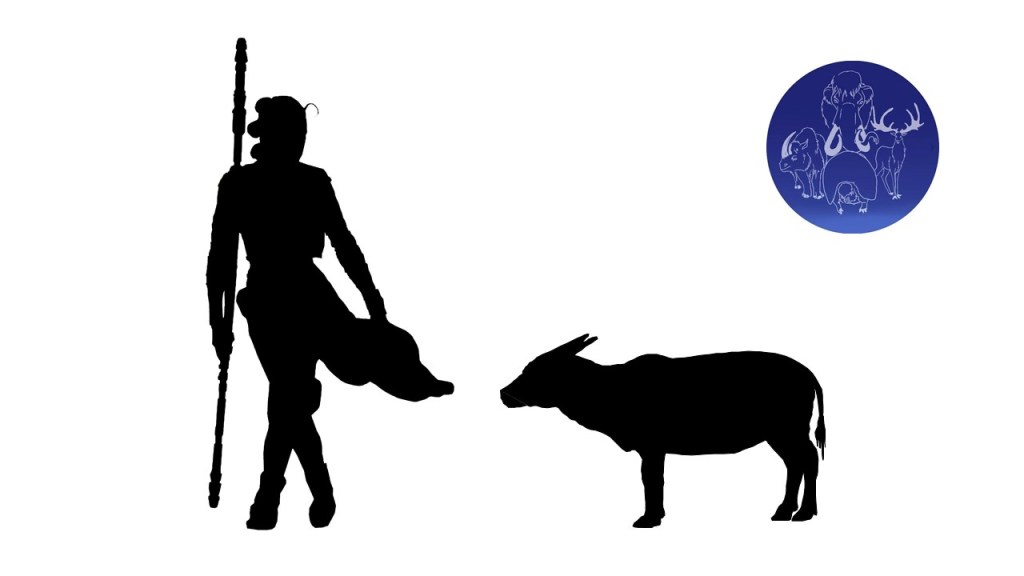Island dwarfism is perhaps one of the most beautiful examples of evolution through natural selection. Large animals that arrive on an island, evolve smaller sizes to survive on less food, and because there are fewer (if any) predators. (Similarly, small animals that are isolated on islands can get bigger, as we’ve seen with the dodo, the giant rabbit, and the giant duck.) The way species interact and are limited in island environments, is known as the island syndrome. This is where the form of a species along with the surrounding ecosystems, all play a part in how, and if, it survives with less resources available and new conditions to live in.
It does happen. And we have seen it already with many different species. The cute little hippos in the Mediterranean, tiny mammoths off the coast of California, and a weird goat from Mallorca, are just a few examples we have written about. These animals, and many more, adapted to island life, some in the most peculiar way. Isolated from populations on the mainland, they evolved in their own way to survive in a smaller space with new habitats and foods. It’s something quite remarkable when you think about it. Enormous mammoths evolving to a much smaller size over a few generations. Evolution is a pretty funky beast.
Another of these unique island creatures was the Cebu tamaraw, the extinct dwarf water buffalo (Bubalus cebuensis). Fossils of this small extinct water buffalo were discovered on the island of Cebu in the Philippines, in the 1950s, and it wasn’t for another 40 years that they were actually studied. This little creature patiently lay waiting in a museum. And Cebu tamaraw was small. Like, really small. Buffalo are very big animals, and can be eye to eye with an adult human. Cebu tamaraw went through extreme size reduction, from a big buffalo to an animal about the size of an Alsatian! It’s the smallest example (so far) of island dwarfism in bovids.

Sometime, around 100,00 years ago the sea levels in the Philippines were much lower than today. Which meant that the hundreds of islands that we see in the Philippines today were either linked, or the water between them was much less. This is important, because this lower sea level allowed many animals from the mainland to wander, and sometimes take a short paddle to many of the islands. We do not have lots of information about when the Cebu tamaraw first evolved, because we have so few fossils found. They evolved from the Asian water buffalo, probably sometime around 100,000 years ago when the islands were more accessible. Similarly, we don’t know when they became extinct. Some researchers suggest this may have been relatively recently, just a few thousand years ago. And it is very likely that humans saw these miniature buffalos.
Today, around 170 species of mammals live in the Philippines, making it one of the richest places for mammals in the world. The huge number of islands just off the mainland, along with the changing sea levels, allowed many species of mammals to make their way to new environments and evolve separately from their mainland relatives. In all of this beautiful biodiversity is one close relative of the Cebu tamaraw, the tamaraw (Bubalus mindorensis). Slightly larger than it’s extinct relative, around the size of a sheep, the tamaraw is another dwarf water buffalo living on the island of Mindoro. It is currently endangered, with fewer than 450 individuals left, due to human habitat destruction and hunting.

We can learn a little about our extinct beast by looking at the life of the tamaraw that’s still alive today. They and once lived all across the island, from the coast to the top of the mountains, showing they were well adapted to live in a range of environments. With no predators (before humans arrived), the tamaraw was active in the day time, feeding on grasses and bamboo shoots. Today they are more restricted to thicker bushy vegetation and are active at night, which is a recent move by them to avoid humans. More fossils of the Cebu tamaraw from these islands will tell us al lot more about this enigmatic species, and how similar it was to it’s living relative.
More fossils will also reveal how diverse life was on these islands in the Philippenes. As recently as 2017, another species of dwarf buffalo was discovered to the south on the island of Sulawesi, in Indonesia. This long stretch of islands are not only rich in biodiversity today, but have been in the past. Full of amazing animals, and the more we discover, the more we can learn more about the richness of life on Earth.
Witten by Jan Freedman (@JanFreedman)
Further reading:
Croft, D. A. L., et al. 2006. Fossil remains of a new diminutive Bulbalus (Artiodactyla: Dovidae, Bovini) from Cebu island, Philippines. Journal of Mammalogy. 87. pp.1037-1051. [Full article]
Lomolino, M. V., et al. 2013. Of mice and mammoths: generality and antiquity of the island rule. Journal of Biogeography. 40. pp.1427-1439. [Full article]
Rozzi, R. 2017. A new extinct dwarfed buffalo from Sulawesi and the evolution of the subgenus Anoa: An interdisciplinary perspective. Quaternary Science Reviews. 157. pp.188-205. [Full article]
Rozzi, R., et al. 2020. Casual explanations for the evolution of ‘low gear’ locomotion in insular ruminants. Journal of Biogeography. DOI: 10:111/JBI.13942. [Full article] van der Geer, A., Lyras, G., and Drinia, H. 2013. Trends of body size evolution in the fossil record of insular Southeast Asia. Sage 2013. U


A fascinating post. I wonder if humans might become smaller or larger if stranded on an island (not that there will be many islands left if sea levels rise).
I never realized that the tamaraw was an island dwarf. Of course it makes sense once I read it.
Great Article BTW.
Thanks Philip! We’re glad you enjoyed it! 🙂